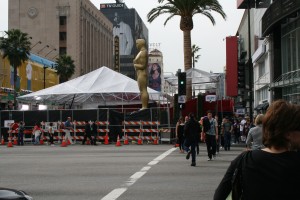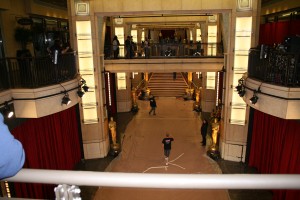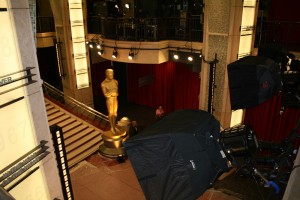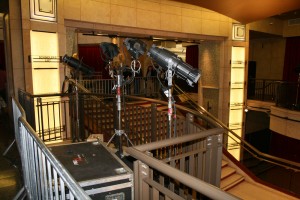Once upon a time, Los Angeles Taco Trucks [*] were simply "Roach Coaches" that unironically played La Cucaracha ("The Cockroach") when pulling up to the sidewalk.
Then at some point, maybe 2005, Taco Trucks entered the ambit of the hipster palette. This was the year great taco blogs emerged like LATaco.com and The Great Taco Hunt. Avid foodies began meticulously ranking and debated the merits of neighborhood Taco Trucks. Perhaps it was because hipster turf had encroached on Latin-American turf (i.e., Silverlake, Echo Park, and Downtown). Or perhaps it was because Taco Trucks are about the only way to get fresh eats for under $2. Or perhaps it was simply because the best taco trucks are so mind-bendingly amazing. Regardless, Prometheus-style, a vanguard of bloggers, hipsters, and assorted trendsvestites have spread the good news to the rest of us.

Victory of the Taco Truck
The East Los Angeles Taco Trucks fought years of legislative battles. Considered a nuisance by non-mobile businesses who don't want their sidewalks blocked, Taco Trucks were required to move every hour or risk up to a $1,000 fine and/or six months in prison. Because of these laws, part of the fun of getting a great taco used to be finding the darn truck. Analogous to how the best clubs often have no sign out front. When you found a good truck, you really felt like you were in the know.
For years, various lobbies and city officials repeatedly tried to ban Taco Trucks altogether, as they are considered anti-competitive to sit-down restaurants that must pay rent, waitstaff, insurance, city taxes, etc. It wasn't until late 2008 that the bulk of these measures were voted down, allowing Taco Trucks to stay in one spot all night and generally exist with some semblance of brick-and-mortar detente.
Enter Kogi BBQ
A few weeks ago I tried Kogi BBQ, the new Korean Barbecue fusion Taco Truck. They serve a truly mind-blowing spicy barbecue chicken taco garnished with cilantro-green onion-lime relish and crushed sesame seeds. The Kimchi Quesadilla is an acquired taste; saltier than anchovies, it packs a mean punch. Their five dollar burritos are also a flavor explosion, spicy meats mixed with scrambled eggs, chopped onions and cilantro, romain and cabbage tossed in Korean chili-soy vinaigrette.

Slick Marketing
The brainchild of a Filipino restaurateur, Kogi follows the traditional model of a Taco Truck by traveling around town throughout the night. However, Kogi employs a top executive chef, is backed by a slick PR company, and regularly posts locations and updates to Twitter. There is something almost ouroborosian about a Taco Truck for hipsters, by hipsters. Kogi's already been covered by KCRW, K-CAL 9, and LA Weekly. They even have a fan page on Facebook. Kogi has only been around since November and the cat is already out of the bag.
If you want to try Kogi, be prepared to wait in line. I tried to go last Friday in the rain, in Silverlake. Jay and I planned it to the minute, arriving first in line at 5pm. The Kogi truck arrived an hour late, two blocks south of its announced location. When the hour-long line turned and sprinted south toward the arriving Taco Truck, I found my first place spot became the last place spot. People who arrived last got served first. Total time for Jay and I to get our Kogi tacos: two hours.
Los Angelinos have a near-Soviet level capacity for waiting in lines. But I have to admit, going to Kogi is like buying a taco at the DMV. And because the truck consistently shows up an hour late, there's really no way to outsmart the lines. Kogi reminds me of when I thought I discovered Cold Play, and eight months later they were all over Leno and Letterman. Try Kogi if you want to taste one of the most original tacos you'll ever eat in your life. But if you want fast service, no lines, and a truck that's always there when you need it, have a Suadero taco at Taco Zone on Alvarado.
*[Back to post] Yes, I am choosing to capitalize Taco Truck throughout this post.











